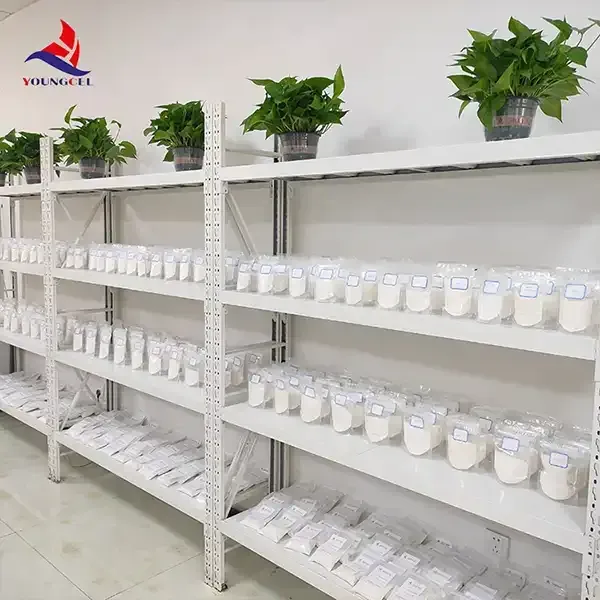Cellulose Coating A Sustainable Solution for Modern Applications
In an era of increasing environmental awareness and sustainability, the importance of biodegradable and eco-friendly materials has grown exponentially. Among these materials, cellulose coating emerges as a prominent solution, offering versatility, functionality, and an environmentally friendly profile. This article delves into the significance, applications, and benefits of cellulose coating in various industries.
Cellulose, a natural polymer derived from plant cell walls, is one of the most abundant organic compounds on Earth. Its renewable nature makes it a preferable choice for creating coatings that serve multiple purposes while minimizing environmental impact. The process of extracting cellulose from raw materials such as wood, cotton, or agricultural residues makes it a viable candidate for sustainable production.
One of the most notable advantages of cellulose coating is its biodegradability. Unlike synthetic coatings that can take hundreds of years to decompose, cellulose-based coatings can break down naturally in the environment within a relatively short period. This characteristic makes them an attractive option for applications in packaging, where reducing plastic waste is a pressing concern.
In the packaging industry, cellulose coatings are increasingly being utilized as a barrier between food products and the external environment. They provide excellent moisture resistance, which is crucial for preserving the freshness of food items. Additionally, cellulose coatings can be applied to paper and cardboard products, enhancing their durability while maintaining recyclability. This is particularly important in light of global efforts to combat plastic pollution and foster a circular economy.
Beyond packaging, cellulose coatings find applications in the textile industry. The ability to create breathable and lightweight coatings makes them suitable for enhancing the performance of fabrics. Cellulose coatings can provide water resistance while allowing moisture vapor to escape, making them ideal for outdoor and athletic wear. Furthermore, their natural origin aligns well with the growing consumer demand for sustainable and eco-friendly textiles.
cellulose coating

In addition to food and textiles, cellulose coatings are also being explored in the field of electronics. The increasing demand for sustainable alternatives in electronic devices has led researchers to investigate cellulose as a potential coating for electronic components. Cellulose coatings can provide insulation and protection from moisture, contributing to the longevity of electronic devices. Furthermore, their compatibility with various substrates means they can be easily integrated into existing manufacturing processes.
The use of cellulose coatings is not limited to enhancing the durability and functionality of products; they also serve an aesthetic purpose. With the ability to create smooth and glossy finishes, cellulose coatings can elevate the appearance of a wide range of consumer goods, from cosmetics to furniture. This dual functionality of providing protection while enhancing visual appeal makes cellulose coatings a valuable asset in product design.
Moreover, developing cellulose coatings can contribute to reducing the carbon footprint of various industries. Since cellulose can be sourced from sustainably managed forests or agricultural byproducts, its use can promote responsible resource management. By substituting conventional synthetic coatings with cellulose-based alternatives, companies can minimize their reliance on fossil fuels and reduce greenhouse gas emissions associated with production.
Despite the numerous advantages of cellulose coatings, there are challenges to their widespread adoption. For instance, the performance characteristics of cellulose coatings need to be optimized for specific applications. Research and development efforts are essential to enhance their barrier properties, water resistance, and overall durability, ensuring that they can compete with traditional, non-biodegradable coatings.
In conclusion, cellulose coating represents a promising step towards more sustainable and eco-friendly solutions across a myriad of industries. Its natural origin, biodegradability, and versatility render it an ideal candidate for replacing harmful synthetic coatings in applications ranging from packaging to textiles and electronics. As research continues to unlock the potential of cellulose-based materials, it is likely that we will see increased adoption and innovative applications that align with global sustainability goals. By embracing cellulose coatings, we can move closer to a future where materials are not only functional but also respectful of our planet.
-
Rdp Powder: Key Considerations for Wholesalers in the Building Materials IndustryNewsJul.08,2025
-
Key Considerations for Wholesalers: Navigating the World of Hpmc - Based ProductsNewsJul.08,2025
-
Hpmc Detergent: Key Considerations for WholesalersNewsJul.08,2025
-
Key Considerations for Wholesalers: China Hpmc For Tile Adhesive, Coating Additives, Concrete Additives, and MoreNewsJul.08,2025
-
Crucial Considerations for Wholesalers: Navigating the World of Construction MaterialsNewsJul.08,2025
-
Key Considerations for Wholesalers Sourcing Additive For Cement, Additive For Concrete, Additive For Putty from Additive Manufacturer Shijiazhuang Gaocheng District Yongfeng Cellulose Co., Ltd.NewsJul.08,2025




